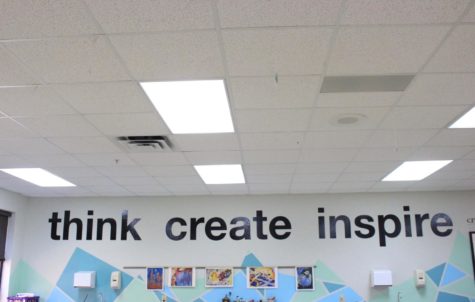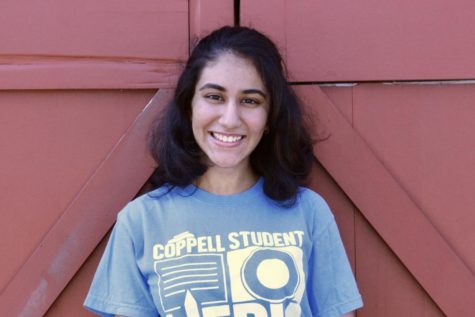Captivating classrooms: Castro-Zeña, Hauske creating unique environments
CHS engineering teacher Pilar Castro-Zeña mentioned how she has quotes written on her walls on August 24th, 2018. She explains how it keeps the work space more positive and welcoming for her diverse group of students, and the particular quote is her favorite.
September 4, 2018
For Coppell High School STEM teacher Pilar Castro-Zeña and art teacher Michelle Hauske’s students, classrooms are uniquely filled with personal and aesthetic touches.
Castro-Zeña and Hauske have made sure their classrooms are both pleasant and supportive environments designed around the needs of their classes. From wall decor to useful classroom corners, the two teachers use their personal touches to enhance their classrooms.
Castro-Zeña spent this the summer painting the walls of room D108 to a soft gray and adding bright quotes to her walls.
“I want to make my students happy here,” Castro-Zeña said. “My two goals were making my students all feel welcome here, and inspiring them with positive quotes so that we have an enriching environment where students want to learn.”
Quotes and decorations are not all that line Castro-Zeña’s classroom. Pictures of her students and their projects can be seen from side to side of the room, and at the entrance of the classroom, the word “welcome” is on the wall in numerous languages.
“Everything was done [with students] in mind,” Castro-Zeña said. “I wanted [students] to build relationships and find connections, like finding your own language… I wanted to give a welcome to everybody. Students told me that they really liked that- that it was personalized for them.”
Castro-Zeña’s students share her enthusiasm for her unique classroom.
“It isn’t as dreary as most other classrooms,” CHS sophomore Marty Hightower said. “[Castro-Zeña] has a really good way of showing people’s successes, and what they’ve done.”
Hauske’s classroom is no less inviting and appealing. The words “think”, “create”, and “inspire” are written in bolded black paint on the back wall of E105, and they had been on the wall before Hauske began to use the classroom; upon moving to E105, Hauske then added a geometric pattern of blue triangles painted behind them.

“I added the geometric shapes and the color, and I actually use them as a teaching device for elements and principles, so we can understand space,” Hauske said.
Similarly to Castro-Zeña’s classroom, Hauske hung student artwork on all four walls.
“Student art needs to be up there so that [students] are inspired. There are also different purposes for the different areas of the classroom. AP Art History is more of an academic classroom and a studio classroom,” said Hauske, gesturing to the research area with MacBooks and a desk.“The goal is to have space for students to critique art, talk about it, and be inspired by it.”
Being both a useful and a colorful classroom, students such as CHS junior Riya Patel and CHS sophomore Zoe Goodall find they enjoy being inside the classroom.
“I really like to be in here because of the decorations,” Patel said. Most students in the Hauske’s classes find that the classroom environment is one that allows them to be creative and comfortable.
“It really doesn’t feel like school when I’m working in here because it’s such a different kind of room,” Goodall said.
Ultimately, both teachers think it is important to have such intricately and thoughtfully designed classrooms.
As per Castro-Zeña’s favorite quote on her wall, “If opportunity doesn’t knock, build a door,” the two teachers’ classrooms certainly serve as doors of opportunity for students.










